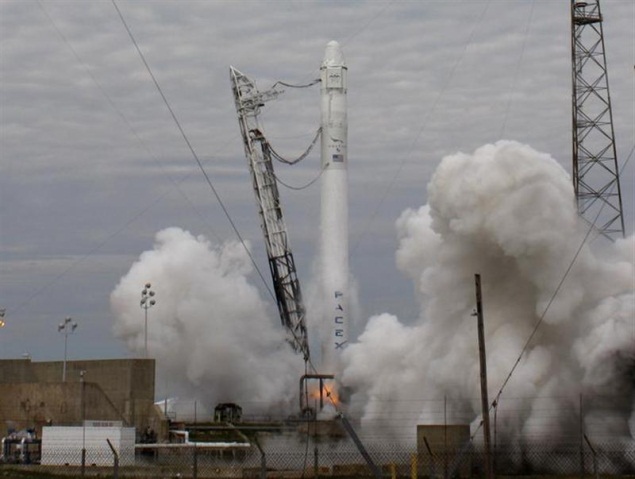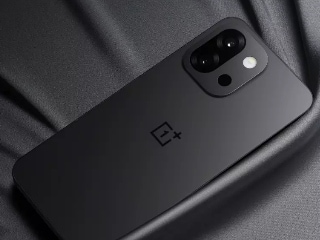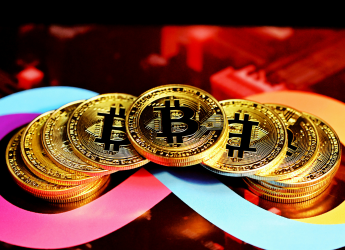- Home
- Others
- Others News
- NASA LADEE lunar mission confirms potential of laser communications in space
NASA LADEE lunar mission confirms potential of laser communications in space

Hosted aboard the Lunar Atmosphere and Dust Environment Explorer (LADEE), for its ride to lunar orbit, the Lunar Laser Communication Demonstration (LLCD) mission was designed to confirm laser communication capabilities from a distance of almost a quarter-of-a-million miles, NASA said.
(Also see: NASA's LADEE moon probe settles into lunar orbit)
In addition to demonstrating record-breaking data download and upload speeds to the Moon at 622 megabits per second (Mbps) and 20 Mbps, respectively, LLCD also showed that it could operate as well as any NASA radio system.
"Throughout our testing we did not see anything that would prevent the operational use of this technology in the immediate future," said Don Cornwell, LLCD mission manager at NASA's Goddard Space Flight Center in Greenbelt.
For example, LLCD demonstrated error-free communications during broad daylight, including operating when the moon was to within three degrees of the Sun as seen from Earth.
LLCD also demonstrated error-free communications when the Moon was low on the horizon, less than 4 degrees, as seen from the ground station, which also demonstrated that wind and atmospheric turbulence did not significantly impact the system. LLCD was even able to communicate through thin clouds, an unexpected bonus.
Operationally, LLCD demonstrated the ability to download data from the LADEE spacecraft itself.
"We were able to download LADEE's entire stored science and spacecraft data (one gigabyte) in less than five minutes, which was only limited to our 40 Mbps connection to that data within LADEE," said Cornwell.
Using LADEE's onboard radio system would take several days to complete a download of the same stored data.
Additionally, LLCD was to prove the integrity of laser technology to send not only error-free data but also uncorrupted commands and telemetry or monitoring messages to and from the spacecraft over the laser link.
LLCD also demonstrated the ability to "hand-off" the laser connection from one ground station to another, just as a cellphone does a hand-off from one cell tower to another.
An additional achievement was the ability to operate LLCD without using LADEE's radio at all.
"We were able to program LADEE to awaken the LLCD space terminal and have it automatically point and communicate to the ground station at a specific time without radio commands.
This demonstrates that this technology could serve as the primary communications system for future NASA missions," said Cornwell.
The ability of LLCD to send and receive high definition video was proven with a message from NASA Administrator Charlie Bolden, completing the trip to the Moon and back with only a few seconds of delay.
Catch the latest from the Consumer Electronics Show on Gadgets 360, at our CES 2026 hub.
Related Stories
- Samsung Galaxy Unpacked 2025
- ChatGPT
- Redmi Note 14 Pro+
- iPhone 16
- Apple Vision Pro
- Oneplus 12
- OnePlus Nord CE 3 Lite 5G
- iPhone 13
- Xiaomi 14 Pro
- Oppo Find N3
- Tecno Spark Go (2023)
- Realme V30
- Best Phones Under 25000
- Samsung Galaxy S24 Series
- Cryptocurrency
- iQoo 12
- Samsung Galaxy S24 Ultra
- Giottus
- Samsung Galaxy Z Flip 5
- Apple 'Scary Fast'
- Housefull 5
- GoPro Hero 12 Black Review
- Invincible Season 2
- JioGlass
- HD Ready TV
- Laptop Under 50000
- Smartwatch Under 10000
- Latest Mobile Phones
- Compare Phones
- Samsung Galaxy A07 5G
- Vivo Y500i
- OnePlus Turbo 6V
- OnePlus Turbo 6
- Itel Zeno 20 Max
- OPPO Reno 15 Pro Mini 5G
- Poco M8 Pro 5G
- Motorola Signature
- Lenovo Yoga Slim 7x (2025)
- Lenovo Yoga Slim 7a
- Realme Pad 3
- OPPO Pad Air 5
- NoiseFit Pro 6R
- Xiaomi Watch 5
- Acerpure Nitro Z Series 100-inch QLED TV
- Samsung 43 Inch LED Ultra HD (4K) Smart TV (UA43UE81AFULXL)
- Asus ROG Ally
- Nintendo Switch Lite
- Haier 1.6 Ton 5 Star Inverter Split AC (HSU19G-MZAID5BN-INV)
- Haier 1.6 Ton 5 Star Inverter Split AC (HSU19G-MZAIM5BN-INV)
-
 Google’s Veo 3.1 AI Model Can Now Generate TikTok, Reels-Style Vertical Videos
Google’s Veo 3.1 AI Model Can Now Generate TikTok, Reels-Style Vertical Videos
-
 Amazon Great Republic Day Sale 2026: Top Deals on Laptops From Asus, Acer, HP, and More
Amazon Great Republic Day Sale 2026: Top Deals on Laptops From Asus, Acer, HP, and More
-
 OnePlus Phone With 6.59-Inch Display and 8,000mAh Battery in Development, Tipster Claims
OnePlus Phone With 6.59-Inch Display and 8,000mAh Battery in Development, Tipster Claims
-
 Bitcoin Price Nears Two-Month High as Softer US Inflation Lifts Crypto Sentiment
Bitcoin Price Nears Two-Month High as Softer US Inflation Lifts Crypto Sentiment












